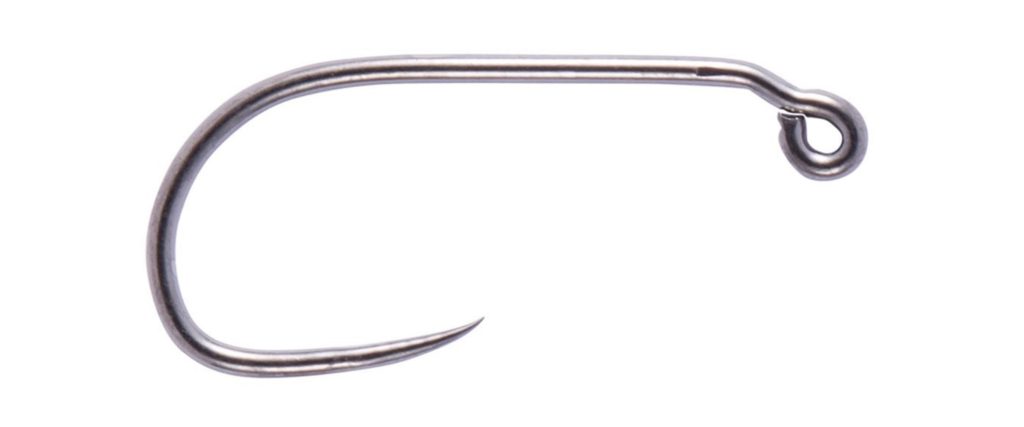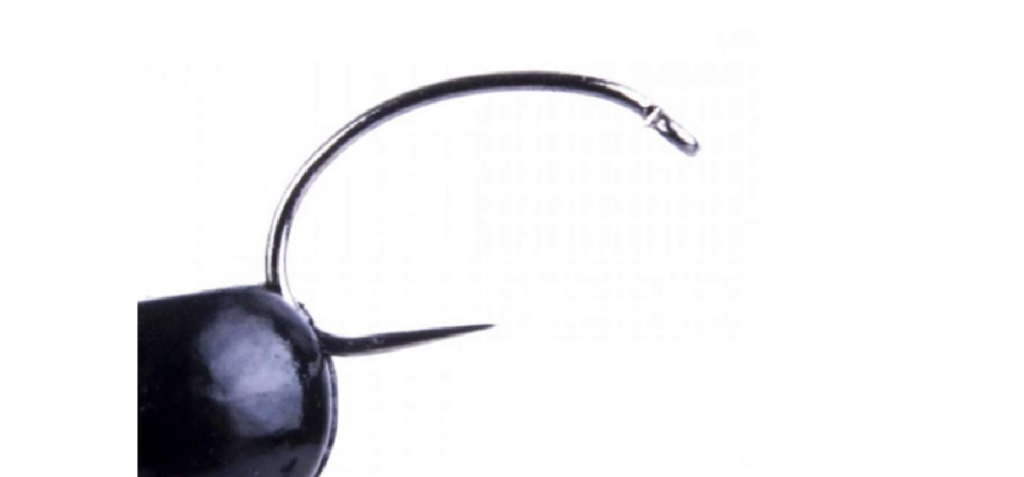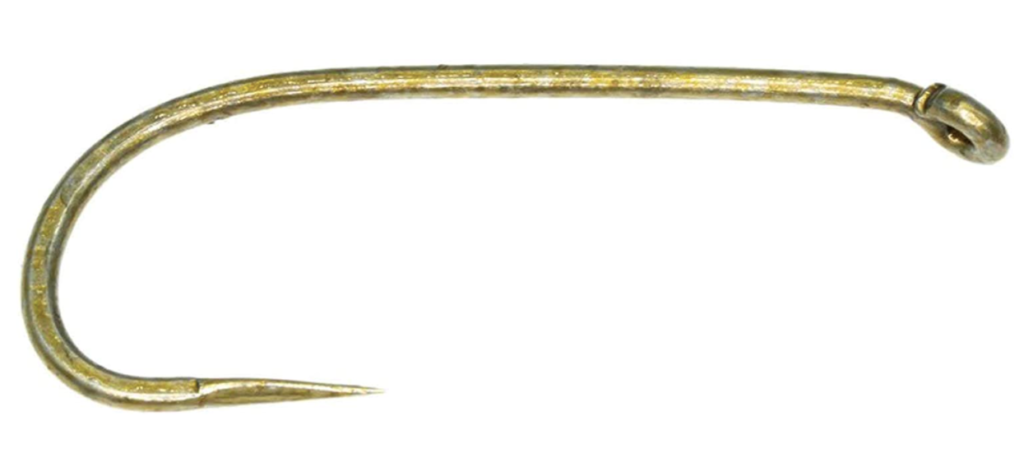5 Best Barbless Fly Hooks – Experts’ Review
Skip To Save Time
5 Best Barbless Fly Hooks – Experts’ Review

There was no mistaking the sight and sound. The miniscule bubble accompanied by the small ‘pop’ was obvious. The wily trout had fallen for a wisp of feathers wrapped around a minute piece of metal, meticulously tied by the angler sitting at a desk hunched over for some time. A quick flick of the wrist, and the orange colored line began to sing the unmistakable song – there was a trout on the line.
Carefully, the angler wrestled with the fish, allowing it to run as it would and taking up line when possible. Finally, the fish rest in the net. A beautiful brown trout, the angler gently reached down and removed the fish from the net and with the touch like that of the finest surgeon, removed the small fly from the corner of the fish’s mouth. Laying the prize back into the water, the fish flicked its tail and disappeared back into the water. The angler rose and with skill honed with hours on the water, cast the fly again for its next intended target.
The process from the actual start of the fly to the careful release of the fish was a carefully designed plan. The native trout population was exceptionally low, and the state department of game and fish passed an important ordinance – all flies must be single hook and barbless.
Barbed hooks VS. Barbless Hooks
The use of barbed hooks for fishing is as old as fishing itself. The purpose of the barb is obvious – the back facing protrusion of the hook prevents it from backing out of the fish’s mouth, allowing the angler to secure the catch. However, the Barbless Hooks for Fishing has gained exceptional following, particularly within the fly fishing community, and for good reason. A Barbless fly fishing hooks is easier to remove from the mouth, saving the fish from potential injury and provides the species an opportunity to thrive in its native waters.
A fly fishing angler can easily turn a standard fly hook into a barbless fly hook by pushing the barb down. This is not as effective as purchasing barbless hooks. A previously manufactured barbless hook is actually better, since the angler need to concern themselves about pinching the barb down incorrectly or if forgotten, worry about damaging the fish because of the barb.
Fortunately, the Internet provides a plethora of barbless fly hooks for the fly fishing angler and fly tying hobbyist. The five following picks represent the best of the best barbless hooks available from Amazon.com. The selections are based on the rating, variety of size and shape for the type of fly needed and tied for the specific fish and time of the year.
Bassdash Fly Fishing Hooks

- Pros – 120 pieces of variable size barbless hooks with a generous eye for threading a tippet. These are slighty humped for tying nymphs and some terrestrials. Size range from a #10 to a #16 – plenty of variation for any number of nymphs or pre-emergents on the trout stream. High carbon steel means an exceptionally sharp point for a fast hook set. All hooks come in standard black. A small fly case is included.
- Cons – There is a limited number of hooks in the set and are only appropriate for nymphs and some wets. The limited shank size handicaps the fly tier to basics with little flash to match a potential hatch. With only four sizes available, anglers who enjoy variety will need to find and purchase additional sets to meet a variety of needs for the water.
Eupheng 100pcs Plus

- Pros – Fair number of hooks for both drys and wets. Variety of sizes and shapes to tie dry, wet and nymph. Corrosion resistant for fresh and saltwater, so species besides trout are on the list for the fly and fly rod. Wider than normal gap means a better hook set with less chance of trout throwing the fly on a head shake.
- Cons – There are a limited number of hook sizes so there is the chance of not matching a hatch. The set does not come with any 1x or 2x hooks for streamers or larger flies to match sculpins and other large trout prey. Eyelets are standard size and may be difficult to tie onto tippets on stream. Hooks do not come separated neatly, so there may be some chaos due to shipping.
MAXIMUMCATCH Maxcatch

- Pros – A large variety of hooks for wets and dries. Those who tie flies will appreciate the large variety made available to them. Hooks are saltwater ready and long enough to tie small streamers to mimic baitfish, small rodents and other fish friendly fare. Inexpensively priced at under 10 dollars, making the cost per hook reasonable.
- Cons – The sizes continue to be the same #10 to #18 with no really extended shanks for true streamers, poppers or larger flies for larger targets. Hooks are packaged into a single plastic box, so those who tie flies will have to dig around to find and separate hooks into sizes and styles.
Mustad Signature Dry Fly Hook

- Pros – Mustad is a leader in the bare hook industry, and these dry fly hooks are some of the best on the market. Packed in groups of 50 and size #10, these are the perfect hook size to match almost any potential hatch you would see on trout waters. Tying terrestrials like beetles, crickets and other insects is easy to match their size on these hooks. The tip is factory sharpened and provides excellent hook set potential.
- Cons – There are #10 hooks and nothing else. There are no varieties of hook sizes outside of the #10 nor are there any longer shanks for streamers, poppers and small rodent dry flies. 50 hooks will set you back almost nine dollars, so these are quite expensive for what you get in the selection.
Tiemco Umpqua TMC

- Pros – 1x length perfect for longer flies like streamers. Full brass construction means long lasting barb points, sharped laser sharp and designed for quick and easy hook sets. Stiff construction means fighting exceptional trout and other fish will not result in thrown or broken hooks because of bad construction.
- Cons – These hooks are only packaged in groups of 25 with no variety of hooks. The only hooks are #10 dry fly hooks. These also cost almost $12.00 for 25 hooks – not a deal in our opinion.
That’s concludes our review, but their are many more option out there.
For example, we haven’t touches the jig hooks and the saltwater jig heads that are closely related to this post.
Reader questions answered
How do you make a barbless fly?
If you elect not to buy barbless fly hooks for tying flies or buy flies with barbless hooks, you do have a few options available for you. Here are the options available:
- Parallel de-barbing – This is the method most used as the angler flattens the barb at the ‘spear’ against the hook itself back towards the hook bend with the pliers running parallel to the hook shank. It is not easy, however, with small hooks like for nymphs, gnats and flies requiring a strike indicator. Fine pliers, careful handling and a sharp eye are necessary – making this very difficult if not impossible in swiftly flowing water.
- Perpendicular de-barbing – Possible; although the integrity of the hook can be compromised, rolled over or left with a hump in the barb area. Forceps or pliers squeeze the hook at a 90-degree angle from the shank. This takes considerable skill as well, and when on the stream in running water with a hatch emerging is not the time to be considering going with a barbless fly.
Is fly fishing more fun than regular fishing?
Give a man a spincast reel, and they will master its cast in moments. Give them an open face reel, and they will learn it with some practice. Give them a baitcasting reel, and it will take some time to learn the fundamentals. Put a flyrod into their hands, however, and it will take some time for absolute mastery of the presentation of the fly and reaching an appropriate distance with a cast.
Fly fishing is much more difficult to learn and master than conventional methods, but after the first fish taken on a fly tied by the angler with a technique with considerable devotion to time spent learning, without a doubt the angler will be, pardon the pun, hooked on fly fishing.
If it can be caught on conventional tackle, it can be caught on a fly rod. This is true from small trout in small streams to large, pelagic fish. It may be a bit more difficult with a fly rod, but it is also considerably more rewarding to land a fish with a fly rod and fly.
What does barbless hook mean?
The barb, or point of the hook is a small piece of metal turned up and facing away from the hook point back to the bend. Its purpose is to prevent a fish from throwing the fly or lure from its mouth. Barbless fly hooks are popular and sometimes mandated on certain streams and rivers to protect native fish populations since the barbless fly hook will not damage the fish when the hook is removed.
Can you catch trout without a fly rod?
Certainly you can. It is common for anglers without experience with fly fishing to use conventional tackle, often ultralight rods with reels spooled with 4 lb. test line, with artificial lures with barbless hooks, salmon eggs and often whole kernel corn for the trout.
One technique that many anglers use is to take a conventional fly and attach to a small spinner. A quantity of weight is attached to the line above the lure for weight. The lure is cast into the water and retrieved.
Can you fish for trout with a spinning reel?
Young people and those not familiar with a fly rod are often seen on the trout streams and rivers with small spinning reel and rod combinations. Others use a spincast reel for simplicity’s sake.
Regardless of reel used, it is the bait, presentation and technique that will land trout. Fly fishing is the most common technique because the majority of a trout’s diet is composed of flies that emerge from the waters for mating. The flies mimic the hatching flies.
Conclusion
The native American trout, be it the brook, brown, cutthroat or rainbow, can prove to be a wily prey and exceptionally finicky when it comes to eating. The proper presentation of a fly, including mending the line to keep the fly moving straight in the water, could mean the difference between a fresh trout shore lunch or going home on an empty stomach.
The protection of the species and development of trophy trout streams and rivers necessitate the use of barbless fly hooks. It is a hope this article has given you enough information to make an educated guess on barbless hooks and their importance in trout fishing for posterity’s sake. While possible for an angler to render a barbed hook barbless, it is far better to purchase barbless hooks as these will not be compromised in integrity or take the chance of harming a fish because of poor or incorrect flattening of the barb.
Ultimately, there is something magical about taking a fish on a piece of metal, mass of feathers and thread that you tied yourself and then being able to release that prize back into the water for the next time.
Check out our fly fishing hook size chart



